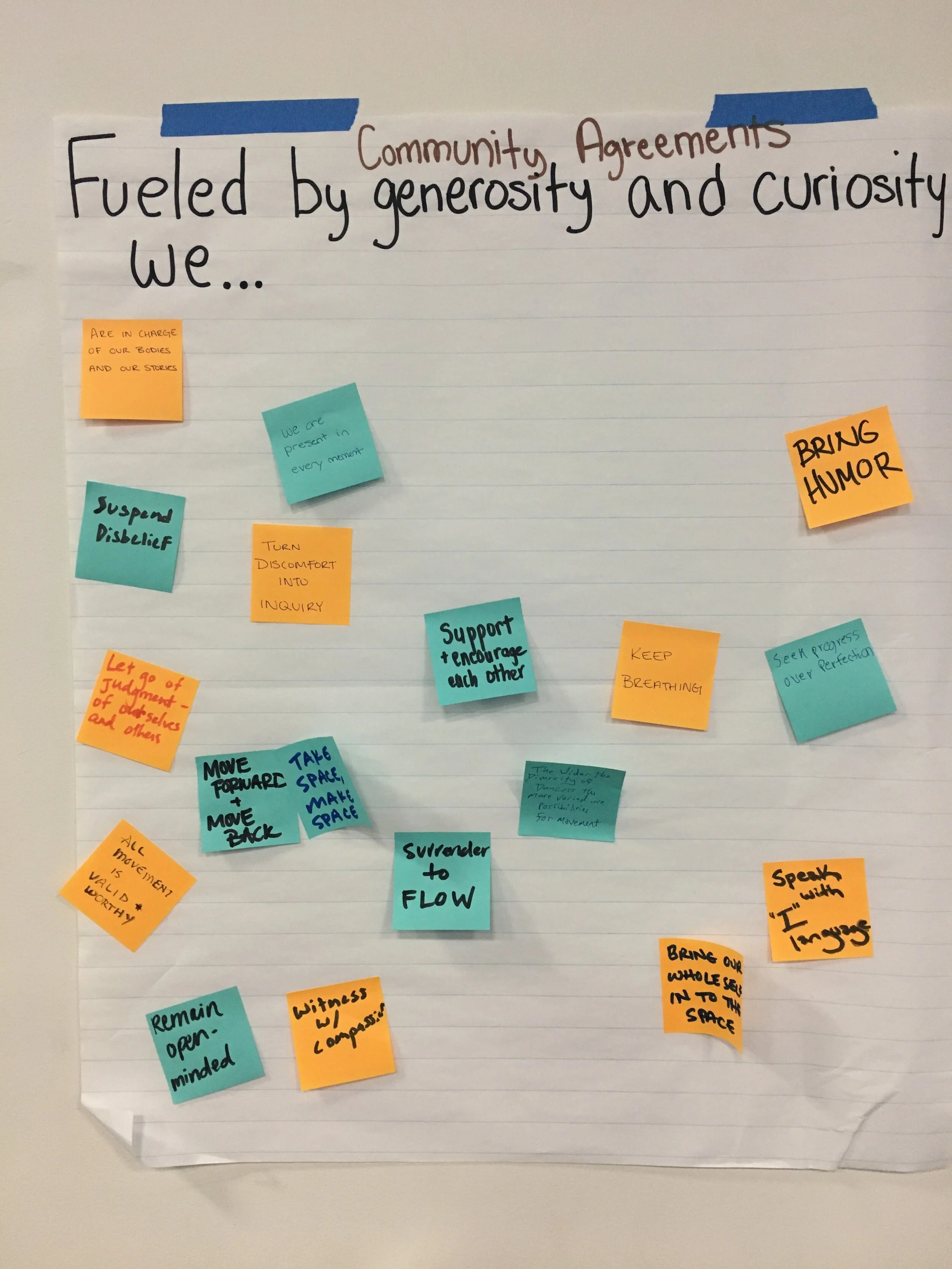Finding Community, Finding Change, Finding Home
Editor’s Note: Our 2020 OAC: Winter Institute took place Jan. 9-12, focusing on intergenerational dancemaking and collaboration. Below, one of our communications Work/Study participants, Willow Green, reflects on the experience.
Over two weeks have passed since I left the Dance Exchange Winter Institute, and I can still feel the newfound tools, relationships, and questions I discovered in those just three-ish days settling into me.
People often talk about how movement or dance are ephemeral because of their temporary nature, and I am struck by how communities like these share the same fleeting impulse and lasting impact. The question always becomes: what do we do now?
So much of this movement practice feels like a life practice to me.
For example, during one of Sunday’s last sessions, we practiced Movement Parameters. In this DX tool, one mover improvises for about 45 seconds and then the group gives a set of parameters and invites them to move within them. It can be a difficult experience because both showing and changing how you move can feel overwhelming or wrong on the body. The way our bodies move is a reflection of our stories and histories. I was afraid of how it would feel to shift that, but I quickly realized that EJ was right about the importance of parameters feeling like an invitation rather than an ultimatum.
When our communities guide us towards a new quality of movement (or life), they are not rejecting the inherent truth of the original qualities. They are inviting us to expand and see that the world is full of new opportunities to feel, see, and move differently.
We can always return to what feels like home on the body, but maybe we will find new nooks and crannies of that home along the way.
This community, however temporary, changed how I felt about my apprehension to the challenge and difficulty of having multiple eyes on you while you try out what seems like the opposite of home. It was still difficult to access—light and lifted are not my thing, and I kind of felt like I was parodying how a kid looks while they chase after a long-gone balloon—but, on a small scale, I realized that changing the context of a challenge can make it accessible.
As a young person, spaces like DX feels like discovering an extended family.
With this extended family of movers, creators, and mentors guiding me, I felt safe to explore new potential.
I may not be able to recreate this experience or see the people everyday, but I have learned how it feels to find an intentional, intergenerational space devoted to creative community building.
This semester, I am seeking out similar spaces in my courses (Community Engaged Puppetry!) and my work at the Gund Gallery (our current exhibition celebrates networks and community).
I am finding that, if you look for it, there is a trend towards a coming-togetherness, and I am looking forward to embracing all the conversations, questions, and curiosities that these intentional communities will foster.
Willow Green is a dance major, farm volunteer, and aspiring artist-activist that currently calls Kenyon College in Gambier, OH home. They have been a Production Work/Study for the 2019 OAC: Winter Institute and a Communications Work/Study for the 2020 OAC:Winter Institute.



